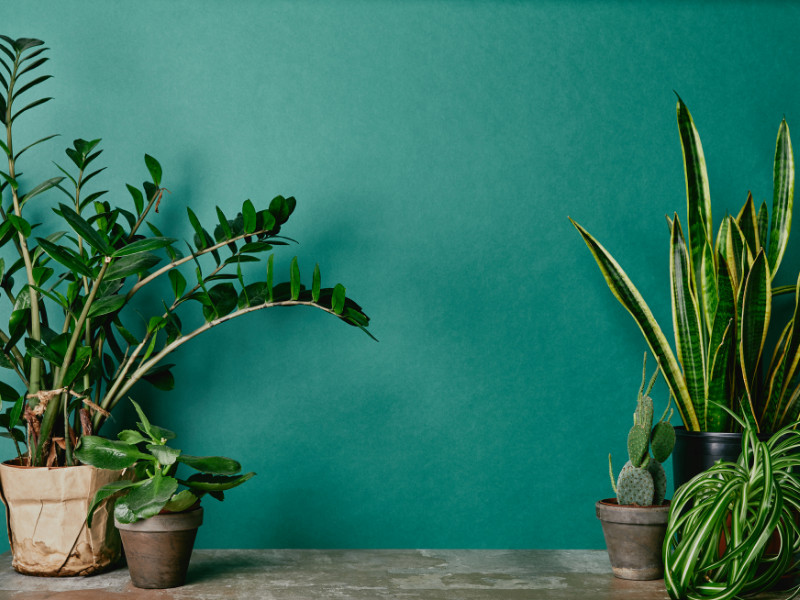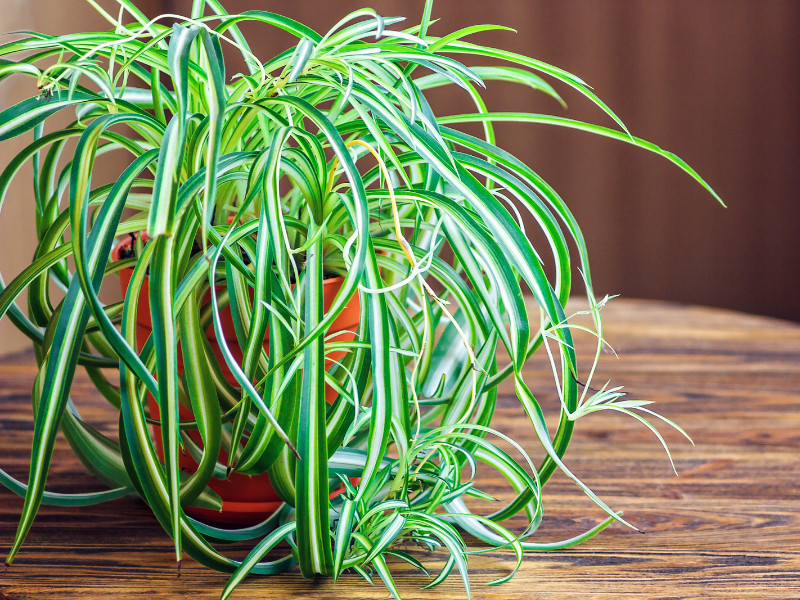Would you like to have indoor plants inside the home? Having plants at home is beneficial for several reasons. The plants will clean the air in your home, improve your mood, and add a touch of elegance to each room. Before you start adding indoor plants to rooms throughout your property, you’ll need to know how to maintain them properly. With the proper steps, you’ll have healthy, thriving plants that can continue to live for years.
1. Keep the Soil Moist Enough
One of the first and most important things to know is that you’ll need to keep the plant’s soil moist. If the soil is dry, your plants will struggle to grow, and they’ll eventually die on you. You’ll need to understand the difference between keeping the soil moist and soaking it. Avoid overdoing it with the water. It’s possible to use too much water on plants, causing them to wilt and die. If you’re using just enough water at the correct times, the soil will retain moisture.
2. Give Your Plants Plenty of Sunlight
Although you’re growing the plants inside the home, you’ll still need to make sure they’re getting sunlight. Not sure how to make that work? All you’ll need to do is place the plants by the windows. You can hang them up or sit them on a table in front of the window to ensure that the plants get much-needed sunlight. Be sure to open the curtains and blinds to allow the sun to seep in through your windows. If your indoor plants don’t get enough sunlight, most of them will die.
3. Create a Watering Schedule
Come up with a watering schedule based on different factors. The amount of water your plants will need depends on the types of plants you’re growing. Some need watering twice a week, but others only need to get watered once a week. If you develop a schedule that works best for your plants, you’ll have no problem keeping the soil moist without adding too much water to each planter.
4. Choose Low-Maintenance Plants That Thrive Indoors
If you’d like to have the most success with your indoor plants, consider choosing low-maintenance options. Some plants naturally require less effort to grow, including spider plants, hedgehog aloe, and monstera plants. While it’s good to have these low-maintenance options around, you can grow many other indoor plants at home.
Don’t feel like you’ll need to limit yourself to only growing the “easy” plants. If you don’t mind putting in the effort to tend to your plants, you can grow dozens of different kinds in rooms throughout your home.
5. Choose Good Spots to Have Your Plants
Select the right spots for your plants. If a plant needs sunlight, it’s not a good idea to have it in a dark corner where it won’t get much light. While it’s ideal to place plants near windows and other open areas, you can put them in different spots. You might want to hang a plant in your bedroom, place one in the bathroom, and even have several hanging around in the kitchen. You can use the plants as decorative pieces to make your home look even better.
6. Move Plants to New Pots When Necessary
When a plant continues growing, it can outgrow its original pot. You’ll need to provide the plant with enough space to continue thriving, which means you’ll need to move the plant. Look for larger pots that have more space before completing the transfer. Once you have something that can offer more than enough space for the plant to continue growing, you can carefully remove it while adding more soil around it. You’ll need to be cautious when completing the plant transfer to avoid causing shock to the plant.
7. Use Fertilizer in the Soil
Be sure to add some fertilizer to the soil. Like you’d add fertilizer for plant soil in your backyard, you can do the same for the plants you’re growing inside. The fertilizer improves soil quality, keeps the soil moist for more extended periods, and encourages the growth of the plants you’re growing. It’s easy to find and completely affordable, making it a great addition to the soil.
8. Allow Drainage to Occur
Even when you have your plants inside the home, you’ll still need to have a way to allow the water from the soil to drain out. If your plant pots don’t have holes on the bottom of them, you can create these holes yourself. It’s a good idea to place a protective layer underneath the plant to capture the water that will drain out. Some plant pots come with the protective layer, but not all of them do.
9. Choose the Right Soil
When you’re dealing with potted plants, it helps to use high-quality soil. Don’t skimp on the soil just because you’re planning to keep these plants inside the home. You can compare different brands of potting soil to see what types of nutrients they’ll offer, along with what they can do for your plants.
10. Use a Soil Amendment
In some instances, you might need to use a soil amendment. An amendment is anything you’d add to the soil to improve the condition of it. If your soil is ideal for some plants but not for others because of its acidity and pH levels, you can adjust it by adding an amendment. Some of the different modifications include compost and coffee grounds, but there are dozens of others to choose from. You can make a soil amendment at home or buy it at a home improvement store.
Maintaining Indoor Plants
Maintaining your indoor plants is just as important as taking care of the plants you’re growing outside. If you’d like to keep your indoor plants thriving for years to come, follow these helpful tips. You’ll need to provide the plants with enough water to keep the soil moist. It’s essential to choose the most suitable soil, provide enough sunlight, and even use a soil amendment when needed. When you put in the effort to take good care of your indoor plants, you’ll get to see them grow to new lengths.
More on Indoor Growing
20 of the Best Indoor Plants to Have
14 Vegetables You Can Grow Indoors in the Fall and Winter
How to Grow 8 Awesome Herbs Indoors All Year Long
Choosing Houseplants






